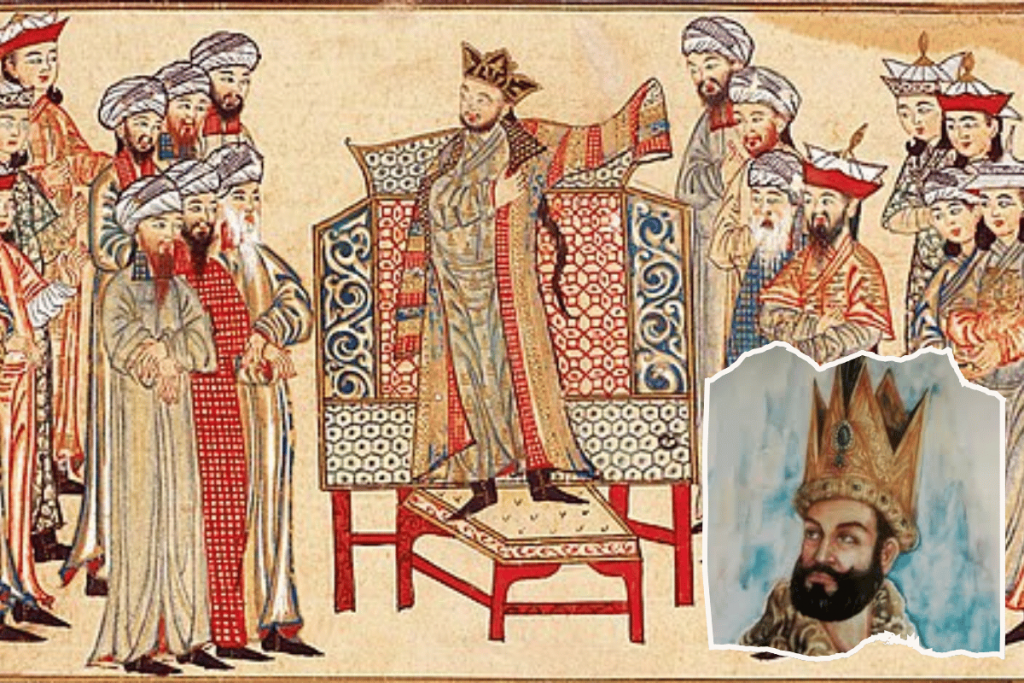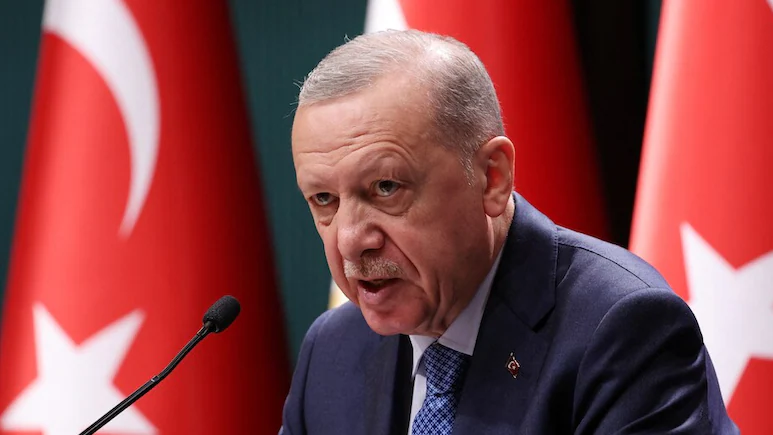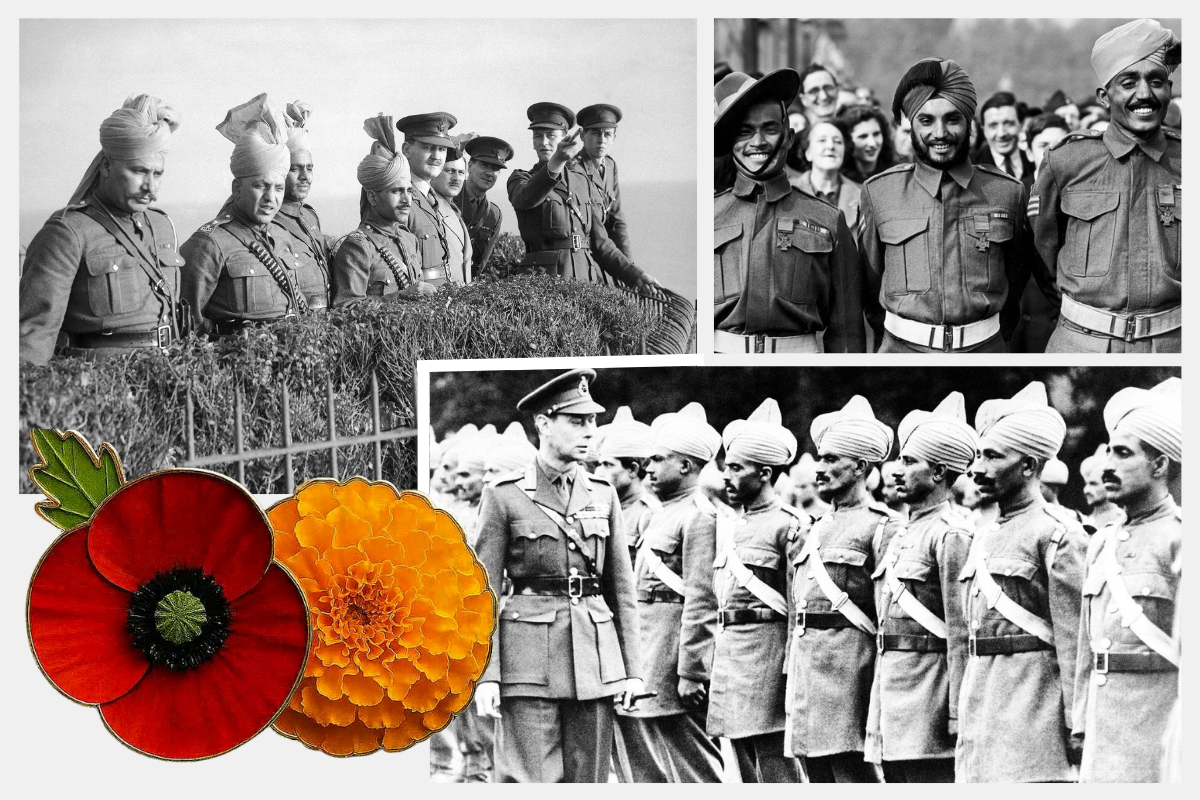
Abu al-Qasim Mahmud Ibn Sabuktigin (November 2, 971 – April 30, 1030) was known as Mahmud of Ghazni or Mahmud Ghaznavi.

He was a sultan of the Ghaznavid (in present-day Afghanistan) from a Muslim Turkish dynasty of Mameluk origin, ruling from 998 till 1030. He was a follower of the Hanafi school of law, which derives its underlying principles from the Quran, hadith, and practices of Muhammad’s companions. In 998 AD, Mahmud of Ghazni, having succeeded his father after all the family struggles. He sought to expand Ghaznavid control into Khorasan, Herat and Balkh by various unethical means. In 1002, Mahmud invaded Sistan (South Afghanistan) and dethroned Khalaf Ibn Ahmad, ending the Saffarid dynasty. From there, he decided to focus on Hindustan (land of the Hindus, i.e. Bhārat/India) to the southeast, particularly the highly fertile lands of the Punjab region.
Mahmud then set out on regular invasions in Bhārat and annexed only the Punjab region. He also vowed to raid and loot the wealthy region of northwestern India every year. Mahmud of Ghazni first invaded modern-day Pakistan and then parts of Bhārat. On 28 November 1001, his army fought and defeated the army of Raja Jayapala of the Kabul Hindu Shahis at the Battle of Peshawar. Mahmud had defeated the ruler of Narayanpur in 1009 CE and plundered its wealth. In 1014 CE, he attacked Thanesar, defeated Rama, the chief of Dera and then looted Thanesar. All the Hindu temples and the images of Thanesar were destroyed, while the principal deity of the Chakraswami temple was taken to Ghazni and placed in a public square for desecration.
He conducted 17 invasions in Bhārat in 25 years and showed the gateway of invasions to the next Islamic invaders. Utbi, the court historian of Mahmud, described the attacks of Mahmud in Bhārat as Jihads (holy wars) to spread Islam and destroy idolatry. Viewed from the circumstances of that age and the religious zeal of the Turks, who were new converts to Islam, Mahmud not only looted the wealth of Hindu temples but destroyed them and the images of Hindu gods. Therefore, it is mostly accepted that one of the aims of Mahmud was the destruction of the Hindu civilisation and the propagation of Islam in India.
Unfulfilled Campaigns of Mahmud into the Vale of Kashmir
In 1015, Mahmud unsuccessfully attacked Kashmir. The ruler of Kashmir was Sangramaraja. He advanced along the Tohi river valley, planning to enter Kashmir through the Tosamaidan pass. However, his advance was checked by the strong fort of Loharkot. After having besieged the fort for a month, Mahmud abandoned the siege and retreated, losing many of his troops on his way and almost losing his own life as well. In 1021, Mahmud again attempted to invade Kashmir, but was again not able to advance beyond the Loharkot fort. After the two failed invasion attempts, he did not attempt to invade Kashmir again. Valiant resistance and bravery of Kashmiri Hindu warriors saved the holy temples and defeated Muhmad’s army.
The Sack of Mathura: A Chronicle of Fire and Plunder
In the year 1018, Mahmud attacked Mathura and defeated a coalition of rulers there while also killing a ruler called Chandrapala. The city of Mathura was ruthlessly sacked, ravaged, desecrated and destroyed. In particular, Al-utbi mentioned in his work Tarikh-e-yamini that Mahmud Ghaznavi destroyed a “great and magnificent temple” in Mathura. The city of Mathura was the richest in India and was consecrated to Vāsudeva-Krishna. When it was attacked by Mahmud of Ghazni, all the idols (murtis) were burnt and destroyed during a period of twenty days, gold and silver were smelted for booty, and the city was burnt down. The art of Mathura fell into decline thereafter. Ghaznavids plundered Mathura. The city was subjected to a relentless storm of desecration.
Approximately 50,000 Hindus were killed by drowning or by the sword; the massacre was accompanied by the destruction of approximately 1,000 Hindu temples in the district.
Mahmud described Mathura’s main temple in his Memoirs. He wrote, “If anyone should undertake to build a fabric like that, he would expend one lakh [100,000] packets of a thousand Dinar, and would not complete it in 200 years, and with the assistance of the most ingenious architects.”
The Campaigns of Kannauj, Gwalior, and Somnath
In 1021, Mahmud attacked Lahore (now Pakistan) and annexed by Mahmud. Mahmud besieged Gwalior, in 1023. He attacked Somnath in 1024 and 1025. In 1025, Mahmud raided Gujarat, plundering the Somnath temple and breaking its Jyotirlinga. Mahmud sacked the temple and is reported to have personally hammered the temple’s gilded Lingam to pieces, and the stone fragments are carted back to Ghazni, where they are incorporated into the steps of the city’s new Jama Masjid in 1026. He took away a booty of 2 million dinars.
Mahmud’s desecration of the Somnath temple in Gujarat in 1024 CE motivated Rajput king Bhoja to lead an army against him, however after Somnath raid, Mahmud Ghaznavi chose a more dangerous route via Sindh, to avoid facing the invading powerful armies of Bhoja, he passed through a desert, where the scarcity of food and water killed a large number of his soldiers and animals,
Mahmud never kept a permanent presence in the northwestern subcontinent; he engaged in a policy of destroying Hindu temples and monuments to crush any move by the Hindus to attack his army. It is estimated that Mahmud’s invasions killed over 2 million people.
The larger implications of Mahmud’s invasions
Mahmud’s invasions of Bhārat (India) were bloody and cruel. He was a ruthless raider and plunderer of wealth. These were not mere episodes of conquest; they were cataclysms that reshaped the destiny of a subcontinent.
- Plunder of sacred cities like Mathura, Kanauj and Thaneshwar were transformed into ruins. Once radiant centres of culture and devotion were reduced to ashes and silence. The demolition of the Shiva temple at Somnath earned him the tremendous hatred of many Hindus. He looted the wealth of the temples and then destroyed them completely at various places such as Jwalamukhi, Maheshwar, Narunkot and Dwarka.
- Though his invasions did not show any systematic effort to conquer the subcontinent, his invasion opened the gates of India to be conquered from the Northwest. The passes of the Hindu Kush, once guarded by mountain kings and tribal chieftains, became the thoroughfare for future conquerors. The path he carved would later be trodden by the Ghurids, the Delhi Sultans, and the Mughals.
- He was considered an Islamic hero. Named Butshikan (breaker of Hindu holy idols). The contemporary Muslims regarded him as the champion of Islam, and he was titled as Ghazi (slayer of infidels) and the idol breaker.

‘Somnath Temple destruction. photograph of an archival print published by F. Nelson in 1895. It is now preserved at the British Library.’
Mahmud had contracted malaria during his expedition against the Jats in 1027 AD, which was his last invasion. On Thursday, 30 April, in the capital Ghazni, Mahmud died at the age of 58. He was buried the same evening in the Firuzi garden. His mausoleum is located in Ghazni, Afghanistan.
Mahmud was not a great statesman, nor a good ruler. He failed to evolve an efficient administrative hierarchy to run the government. He failed to form a stable empire. His empire existed only during his own lifetime. The empire crumbled into pieces after his death. He, thus, failed to establish his empire on certain permanent institutions.
Mahmud simply desired loot, plunder and conversion. In his every invasion, wherever he went, he looted whatever he could, destroyed what he could not, took along with him the wealth of Hindu temples, forced hundred of thousands of people to accept Islam otherwise killed them, took thousands of Hindu women to Ghazni while thousands of others were dishonored, burnt hundreds of villages and cities and destroyed fine pieces of arts. Indian civilisation was fatally wounded and left bleeding. India witnessed a dreadful holocaust.
The mentality of a tyrant and jihadi mindset still exists
In honour of Mahmud of Ghazni, the Pakistan Armed Forces named a short-range ballistic missile the Ghaznavi.
In 2021, Taliban leader Anas Haqqani tweeted praising Mahmud of Ghazni, labelling him as a “renowned Muslim warrior”.


But we must acknowledge that Somnath is still standing high again, and cities of Ghazanavi, Ghori, Ghazni, and Taimoor are perishing in poverty and hunger.








